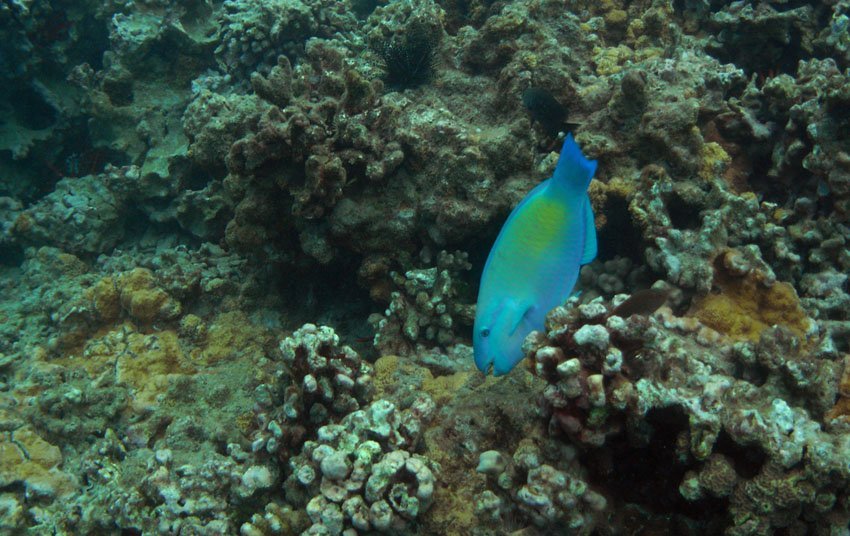Parrotfishes

Parrotfishes (Scaridae) Overview
Parrotfishes are herbivorous and feed mainly on algae. They have beaklike dental plates that make it easy for them to scrape off algae from rocks and coral heads.
They usually have a pretty blue-green body and swim mainly with their pectoral fins. They can be difficult to spot in the water since they move fast.
In Hawaii, parrotfishes are also known as uhu, the juveniles as 'ohua and mid-sized fish as panuhu. As they grow older they undergo color and sex changes.
Frequently Asked Questions
Why are they called parrotfishes?
Parrotfishes get their name from their strong, beaklike teeth that resemble a parrot's beak. These dental plates allow them to scrape algae off rocks and coral surfaces efficiently.
What do parrotfishes eat?
Parrotfishes are herbivores that primarily feed on algae. Some species also ingest bits of coral while scraping algae, which contributes to sand production in reef environments.
Do parrotfishes change color or sex?
Yes, many parrotfishes undergo dramatic changes in both coloration and sex as they mature. This process is known as sequential hermaphroditism, where individuals may start as females and later become males.
What are parrotfishes called in Hawaiian?
In Hawaii, parrotfish are known as uhu. Juveniles are called 'ohua and mid-sized individuals are referred to as panuhu. They are a traditional food fish in Hawaiian culture.
Where can I see parrotfishes in Hawaii?
Parrotfishes are commonly seen on coral reefs throughout Hawaii, often swimming close to rocks or coral heads while feeding. Their bright colors make them a favorite among snorkelers and divers.








